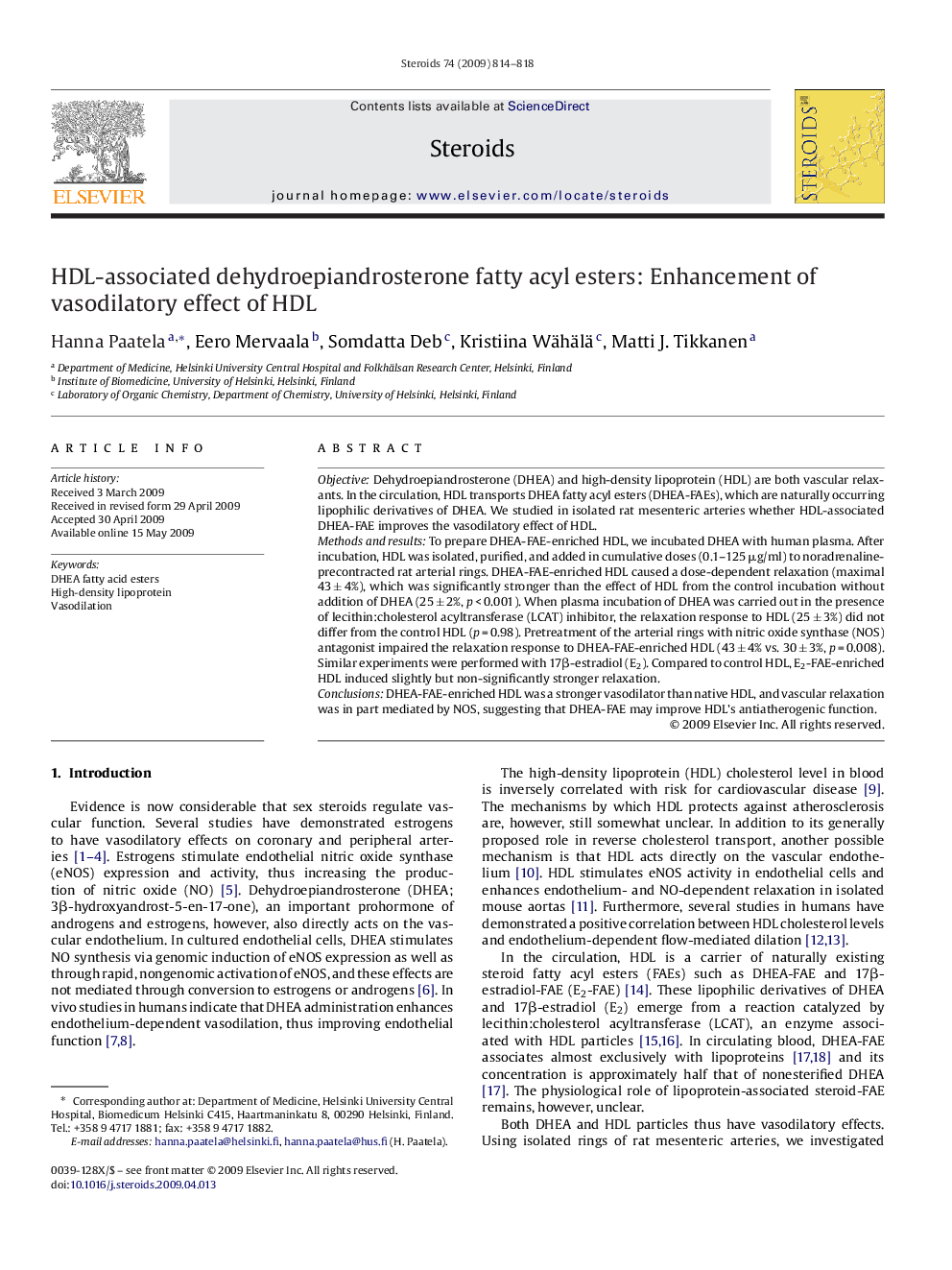| Article ID | Journal | Published Year | Pages | File Type |
|---|---|---|---|---|
| 2028710 | Steroids | 2009 | 5 Pages |
ObjectiveDehydroepiandrosterone (DHEA) and high-density lipoprotein (HDL) are both vascular relaxants. In the circulation, HDL transports DHEA fatty acyl esters (DHEA-FAEs), which are naturally occurring lipophilic derivatives of DHEA. We studied in isolated rat mesenteric arteries whether HDL-associated DHEA-FAE improves the vasodilatory effect of HDL.Methods and resultsTo prepare DHEA-FAE-enriched HDL, we incubated DHEA with human plasma. After incubation, HDL was isolated, purified, and added in cumulative doses (0.1–125 μg/ml) to noradrenaline-precontracted rat arterial rings. DHEA-FAE-enriched HDL caused a dose-dependent relaxation (maximal 43 ± 4%), which was significantly stronger than the effect of HDL from the control incubation without addition of DHEA (25 ± 2%, p < 0.001). When plasma incubation of DHEA was carried out in the presence of lecithin:cholesterol acyltransferase (LCAT) inhibitor, the relaxation response to HDL (25 ± 3%) did not differ from the control HDL (p = 0.98). Pretreatment of the arterial rings with nitric oxide synthase (NOS) antagonist impaired the relaxation response to DHEA-FAE-enriched HDL (43 ± 4% vs. 30 ± 3%, p = 0.008). Similar experiments were performed with 17β-estradiol (E2). Compared to control HDL, E2-FAE-enriched HDL induced slightly but non-significantly stronger relaxation.ConclusionsDHEA-FAE-enriched HDL was a stronger vasodilator than native HDL, and vascular relaxation was in part mediated by NOS, suggesting that DHEA-FAE may improve HDL's antiatherogenic function.
